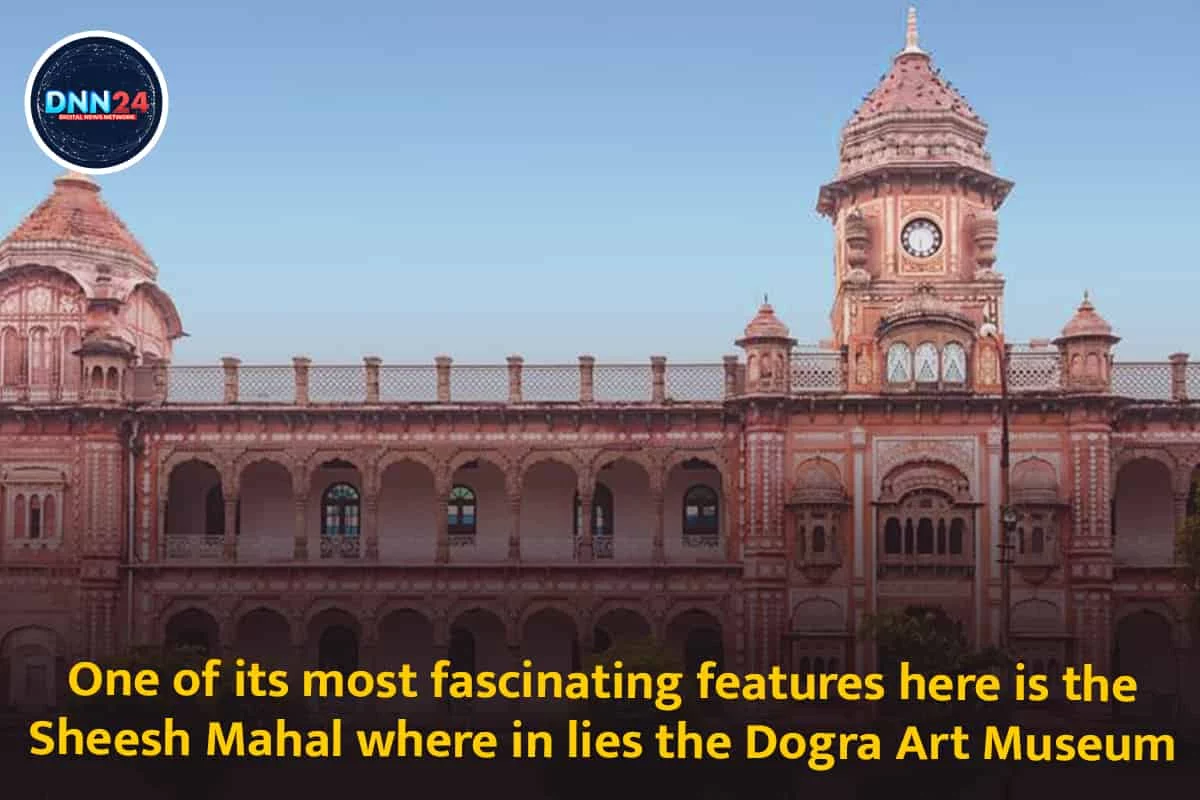Description

Copyright infringement not intended
Picture Courtesy: dnn24.com
Context: The project to recreate the past glory of Srinagar's Maharaj Gunj market is aimed at preserving and reviving the Dogra architecture.
Maharaj Gunj market
- Srinagar Smart City Limited and the Kashmir chapter of the Indian National Trust for Art and Cultural Heritage (INTACH) are working together to conserve the vernacular elements of Kashmiri architecture in the Maharaj Gunj market.
- The project involves the use of a subtle colour palette, realignment and repainting of shop shutters, and the introduction of uniform wooden signage for all shops to restore the historic character of the market.
- It is part of the Srinagar Smart City Mission's revival program and aims to highlight the rich cultural heritage of the city, including old shrines, tombs, mosques, temples, and a gurudwara.
- It is expected to offer new urban experiences for tourists exploring Srinagar, as the area is home to monumental heritage sites and historical significance.
- Maharaj Gunj market was established by Maharaja Ranbir Singh to boost trade and commerce in Kashmir. It once attracted traders from various regions, including prominent cities like Amritsar, Lahore, Karachi, Rawalpindi, and Central Asia.
- The market features a blend of vernacular and colonial architecture, with many buildings showcasing mixed-use designs and rich architectural elements such as collonaded walkways, decorative pilasters, and exposed moulded brickwork.
Dogra Architecture: A Blend of Hindu, Islamic and Sikh Styles
- Dogra architecture is a term used to describe the buildings and structures that were constructed by the Dogra Hindu kings who ruled over Jammu and Kashmir from 1846 to 1947.
- The Dogra dynasty was founded by Maharaja Gulab Singh, who was a vassal of the Sikh Empire and later became an ally of the British.
- The Dogra rulers were patrons of art and culture, and they introduced a new style of architecture that combined elements of Hindu, Islamic and Sikh traditions.
- Rich decorative elements such as intricate wooden carvings, frescoes, and stucco work adorn the interiors, reminiscent of both Mughal and Rajput architectural styles.
- Dogra architecture incorporated European architectural elements, including arches, columns, and decorative brackets. This influence became more prominent during the British colonial period when there was increased interaction between European architects and local builders.
- Dogra architecture often incorporates symbolic elements from Hindu mythology and religious texts, reflecting the spiritual beliefs of the people.
Features of Dogra Architecture
- The use of ‘Nanakshahi bricks’, which are thin, rectangular and reddish in colour. These bricks were also used by the Sikh rulers in Punjab and were named after Guru Nanak, the founder of Sikhism.
- The use of ‘wooden beams’ or ‘latain’ to support the roofs and floors. The beams were often decorated with carvings or paintings.
- The use of ‘ballay’ or wooden planks to form the ceilings or ‘barghay’. The planks were sometimes covered with gypsum plaster or ‘kallai’.
- The use of ‘courtyards’ or ‘pasaar’ as the central space of the buildings. The courtyards were surrounded by rooms on all sides and had one entrance door. The courtyards served as a place for social gatherings, ventilation and natural light.
- The use of ‘arches’ or ‘mehraab’ to form the doorways, windows and niches. The arches were often pointed or cusped, reflecting the influence of Islamic architecture.
- The use of ‘domes’ or ‘gumbad’ to crown the buildings. The domes were usually hemispherical or onion-shaped, and sometimes had a spire or ‘shikhara’ on top, reflecting the influence of Hindu architecture.
- The use of ‘sandstone’ and ‘pebbles’ to embellish the exteriors and interiors of the buildings. The sandstone and pebbles were found in abundance in the Jammu region and were used to create patterns, motifs and sculptures.
- The use of ‘jharokha’ or projecting balconies to adorn the facades of the buildings. The jharokha was a feature borrowed from Rajasthani architecture and was used to provide shade, privacy and views.

Examples of Dogra Architecture
|
Mubarak Mandi Palace
|
●This was the royal residence of the Dogra kings in Jammu city. It was built over a period of 150 years from 1824 to 1970.
●It consists of several buildings, each with a different style and function. The most prominent building is the Sheesh Mahal, which has a large dome with a shikhara on top. The dome is covered with gold leaf and mirrors, creating a dazzling effect.
●The palace also has a Darbar Hall, where the kings held their court, a Pink Hall, which houses a museum, and a Gol Ghar, which was used as a granary.
|
|
Bahu Fort
|
●This is an ancient fort located on the banks of the Tawi River in Jammu city.
●It was originally built by Raja Bahulochan, the founder of Jammu, around 3000 years ago. It was later renovated and expanded by the Dogra kings, especially Maharaja Ranjit Singh, who added a temple dedicated to Goddess Kali inside the fort.
●The fort has thick walls, bastions, gates and towers, and offers a panoramic view of the city.
|
|
Jasrota Palace
|
●This is a ruined palace located in Kathua district of the Jammu region. It was built by Raja Jas Dev, a Dogra king, in the 18th century. It was later occupied by Maharaja Ranjit Singh, who used it as his summer retreat.
●The palace has a rectangular plan with four courtyards and several rooms. It has arched doorways, windows and niches, decorated with floral motifs and sculptures.
●The palace also has a temple dedicated to Goddess Durga inside its premises.
|
|
Billawar Palace
|
●This is another ruined palace located in the Kathua district of the Jammu region. It was built by Raja Bhupat Pal, a Dogra king, in the 17th century. It was later used by Maharaja Ranjit Singh as his hunting lodge.
●The palace has a square plan with four towers at each corner. It has arched doorways, windows and niches, embellished with sandstone and pebbles.
|

Conclusion
- Dogra architecture is a unique style that reflects the history, culture and geography of Jammu and Kashmir. It is a fusion of Hindu, Islamic and Sikh influences, creating a harmonious and elegant aesthetic. It is a testimony to the artistic and architectural achievements of the Dogra kings, who left behind a rich legacy of monuments and structures.
|
PRACTICE QUESTION
Q. What are the key characteristics of Dogra architecture, and how has it influenced the architectural heritage of the Jammu and Kashmir region?
|
















